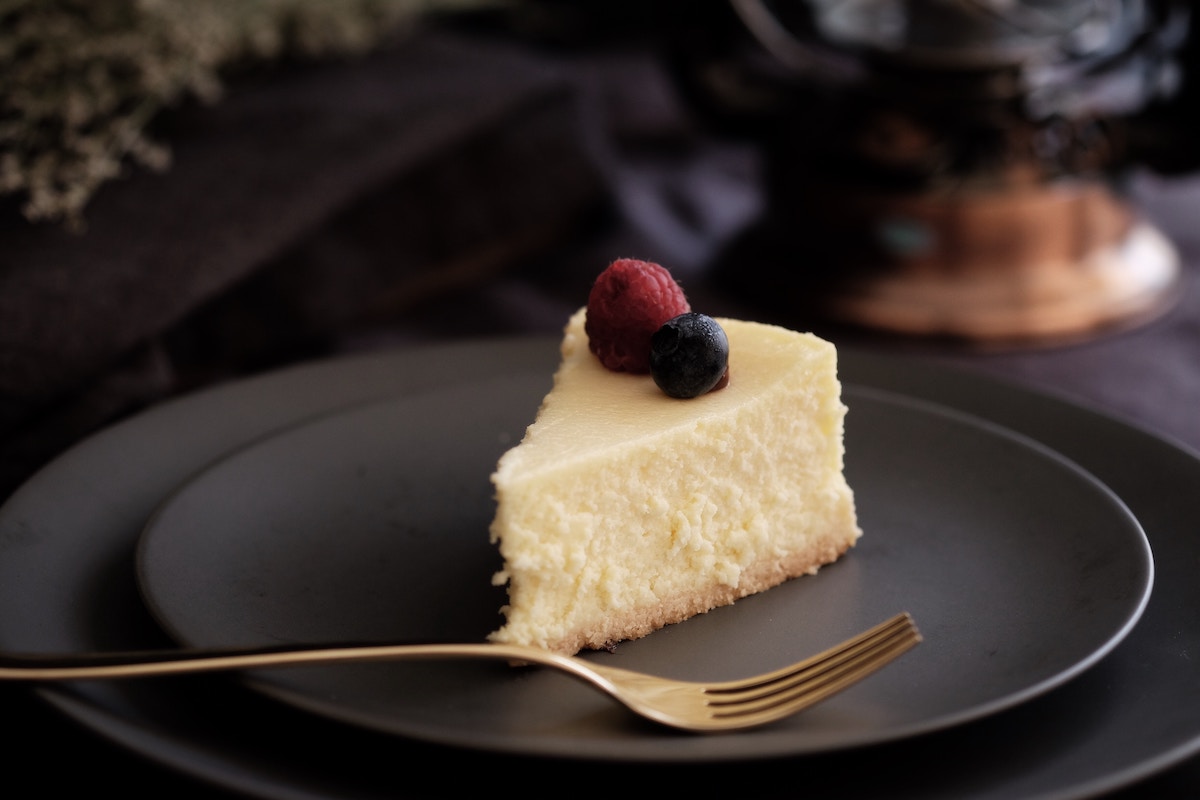
Newsletter Subscribe
Enter your email address below and subscribe to our newsletter

Enter your email address below and subscribe to our newsletter

Yep, your cheesecake has turned out with a weird grainy texture – almost sandy?
So, why is my cheesecake grainy? Cheesecake becomes grainy often due to overbeating the eggs, which incorporates too much air and changes the texture. Additionally, if the cream cheese is not fully softened before mixing, it can result in a grainy texture. Using room temperature ingredients can help.
Since I’m a pastry chef, I’ll explain the common causes of a grainy cheesecake and how to avoid it from happening again.
In This Article

It can be frustrating, especially when you follow a recipe to the letter.
But here are the most common causes for a cheesecake turning grainy.
Make sure you mix your ingredients well.
Sometimes, bits of cream cheese, sugar, or eggs can clump together, leaving pockets of unincorporated ingredients that cause a grainy texture.
Additionally, make sure the sugar dissolves properly before adding other ingredients.
Just like with scrambled eggs, overcooking your cheesecake can cause a grainy texture.
Take care not to overbake your cheesecake in the oven and remove it as soon as it’s set.
Room temperature is essential when making cheesecake.
When cream cheese is too cold, it can clump and cause a grainy texture, conversely, when it’s too warm, its consistency can change and cause the same issue.
Also, make sure to bake your cheesecake at the right temperature.
A water bath is a great way to keep your cheesecake moist while baking, but getting water into the batter can cause a grainy texture.
Make sure to double wrap the pan in foil, keep the water levels low, and never allow water to touch the batter.
As a professional chef, I’ve had my fair share of grainy cheesecakes, and it’s not uncommon – chances are, even Mary Berry or Prue Leith probably had grainy cheesecakes before!
One of my first attempts at making cheesecake was a disaster as I didn’t mix my ingredients well enough, leaving unincorporated bits of cream cheese that resulted in a grainy texture.
After some experimentation, I learned that it’s essential to mix all my ingredients well, as well as monitor the temperature of the dairy products.
Additionally, using a non-stick springform pan and opting-out of a water bath prevented any further graininess while baking cheesecakes.
Making the perfect cheesecake can be challenging, but understanding common mistakes will help you avoid them.
Mix your ingredients well, bake at the right temperature, and use the right pan to prevent a grainy texture.
With these tips, you’ll soon be producing perfectly smooth and delicious cheesecakes.
The cooling process is essential for cheesecake, but a sudden change in temperature can cause the texture to change and become grainy. To avoid this, allow your cheesecake to cool slowly at room temperature before moving it to the fridge.
Yes. Overbeating the cheesecake batter can cause a grainy texture as it incorporates too much air in the mixture, leading to a strange, almost hollow texture. Mix the cheesecake batter on a low setting just until it becomes smooth.
Adding gelatin is not necessary to prevent a grainy texture, and it can change the overall texture of your cheesecake. Mixing your ingredients and cooking your cheesecake correctly will prevent a grainy texture.